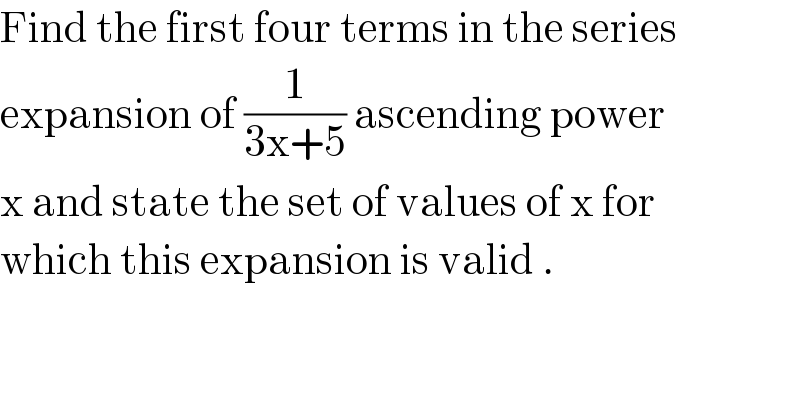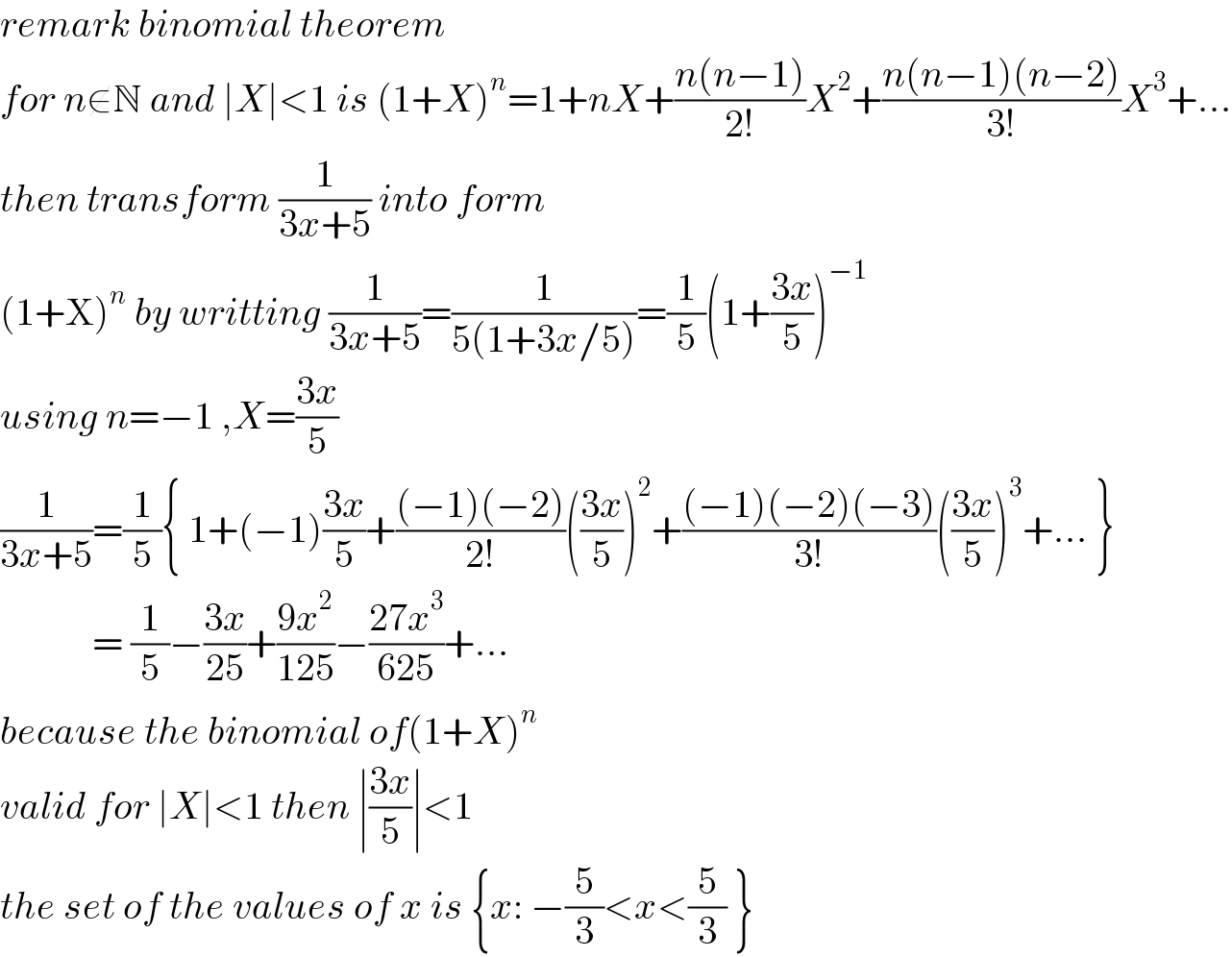
Question and Answers Forum
Question Number 131054 by benjo_mathlover last updated on 01/Feb/21

Answered by EDWIN88 last updated on 01/Feb/21

Answered by mr W last updated on 01/Feb/21
![(1/(3x+5)) =(1/5)×(1/(1−(−((3x)/5)))) =(1/5)[1+(−((3x)/5))+(−((3x)/5))^2 +(−((3x)/5))^3 +...] =(1/5)(1−((3x)/5)+((9x^2 )/(25))−((27x^3 )/(125))+...) =(1/5)−((3x)/(25))+((9x^2 )/(125))−((27x^3 )/(625))+... with ∣−((3x)/5)∣<1 ⇒−(5/3)<x<(5/3)](Q131067.png)
| ||
Question and Answers Forum | ||
Question Number 131054 by benjo_mathlover last updated on 01/Feb/21 | ||
 | ||
Answered by EDWIN88 last updated on 01/Feb/21 | ||
 | ||
| ||
Answered by mr W last updated on 01/Feb/21 | ||
![(1/(3x+5)) =(1/5)×(1/(1−(−((3x)/5)))) =(1/5)[1+(−((3x)/5))+(−((3x)/5))^2 +(−((3x)/5))^3 +...] =(1/5)(1−((3x)/5)+((9x^2 )/(25))−((27x^3 )/(125))+...) =(1/5)−((3x)/(25))+((9x^2 )/(125))−((27x^3 )/(625))+... with ∣−((3x)/5)∣<1 ⇒−(5/3)<x<(5/3)](Q131067.png) | ||
| ||